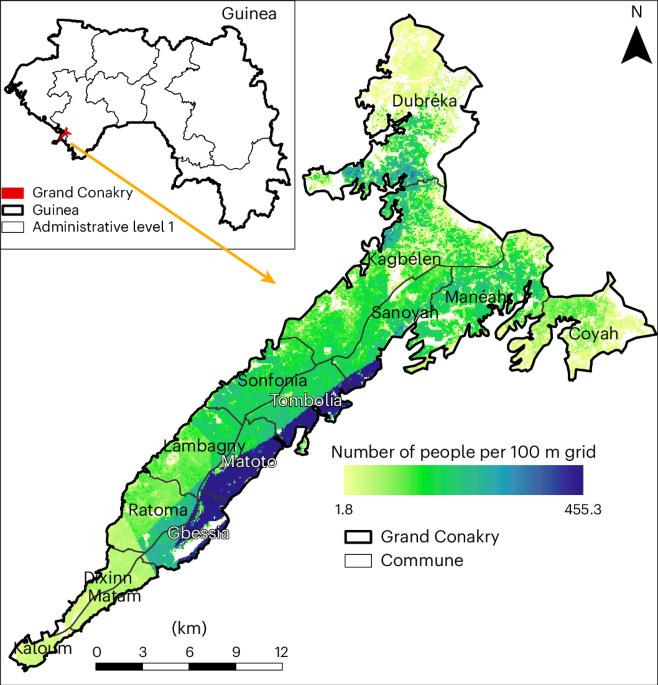Inequities in spatial access to childbirth care in the Grand Conakry conurbation, Guinea
引用次数: 0
Abstract
In this study, we assessed the geographic accessibility, coverage and wealth-based inequities in childbirth care in the Grand Conakry conurbation, Guinea. We assembled administrative boundaries, locations of health facilities, socio-economic indicators, road networks, land cover features and travel speeds. Using a least-cost path algorithm, we computed travel times to the nearest childbirth care facility by type and ownership (public and private). We measured the percentage of women of childbearing age (WoCBA) living within 15, 30 and 60 minutes of their nearest facility and its variation by socio-economic status. On average, travel speeds ranged from 14 to 28 km h−1. Travel to any facility required an average of 8 minutes, increasing to 22 minutes for public hospitals, with notable variation across communes. While nearly all WoCBA (100%) lived within 30 minutes of any facility, coverage dropped to 82% for public hospitals. Traffic congestion substantially increased travel time and reduced coverage. Our findings reveal disparities favoring wealthier women, particularly in peri-urban communes with longer average travel times. Targeted interventions, such as building new roads and enhancing public transportation, are needed in peri-urban areas to improve access to and equity in childbirth care. Grovogui et al. demonstrate major disparities in Grand Conakry, Guinea, in geographic access to healthcare facilities providing childbirth care, driven by the skewed spatial distribution of health facilities, heavy traffic and socio-economic disadvantage

几内亚大科纳克里城市分娩护理的空间可及性不平等
在本研究中,我们评估了几内亚大科纳克里城市分娩护理的地理可及性、覆盖率和基于财富的不平等。我们汇总了行政边界、卫生设施的位置、社会经济指标、道路网络、土地覆盖特征和旅行速度。使用最小成本路径算法,我们按类型和所有权(公共和私人)计算到最近的分娩护理机构的旅行时间。我们测量了居住在距离最近的设施15分钟、30分钟和60分钟内的育龄妇女(WoCBA)的百分比,以及其随社会经济地位的变化。平均行驶速度为14至28公里每小时。前往任何医疗机构平均需要8分钟,公立医院则增加到22分钟,各社区差异显著。虽然几乎所有的WoCBA(100%)居住在任何设施30分钟内,但公立医院的覆盖率降至82%。交通拥堵大大增加了旅行时间,减少了覆盖范围。我们的研究结果揭示了有利于富裕女性的差异,特别是在平均出行时间较长的城郊社区。城郊地区需要有针对性的干预措施,如修建新道路和加强公共交通,以改善获得分娩护理的机会和公平性。Grovogui等人展示了几内亚大科纳克里在提供分娩护理的医疗机构的地理可及性方面存在的重大差异,这是由医疗机构的空间分布倾斜、交通拥挤和社会经济劣势造成的
本文章由计算机程序翻译,如有差异,请以英文原文为准。
求助全文
约1分钟内获得全文
求助全文

 求助内容:
求助内容: 应助结果提醒方式:
应助结果提醒方式:


